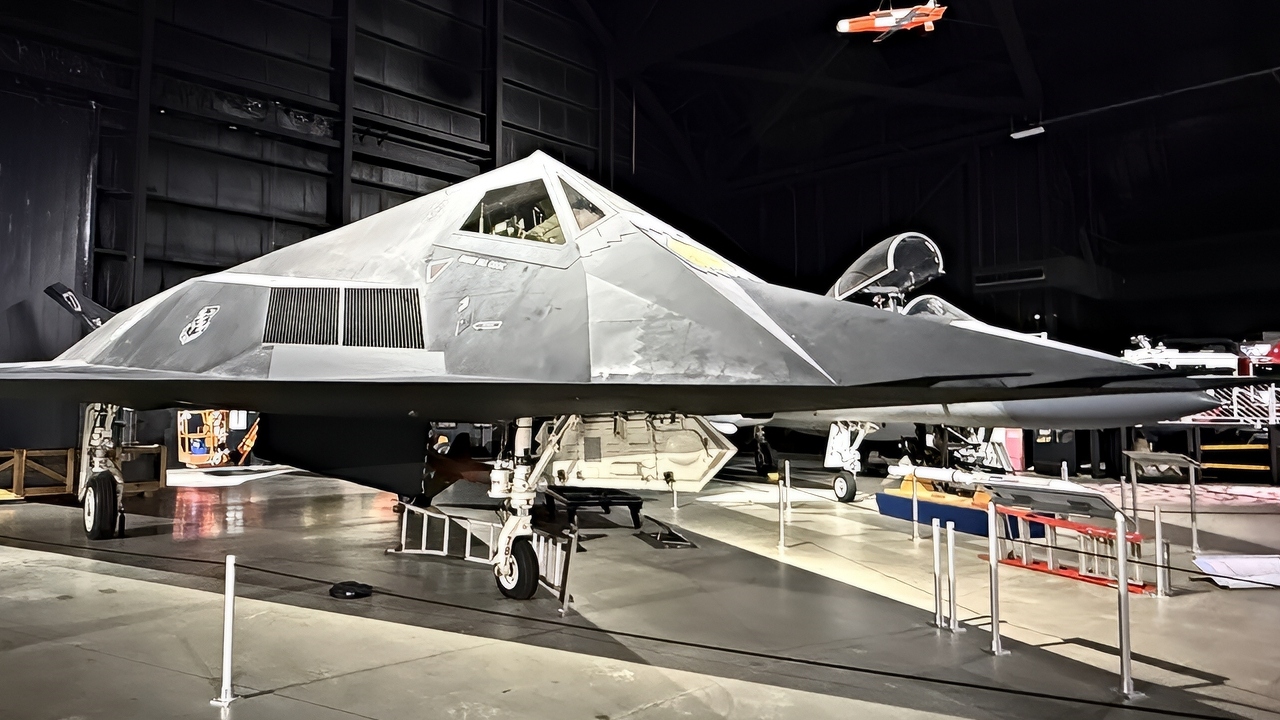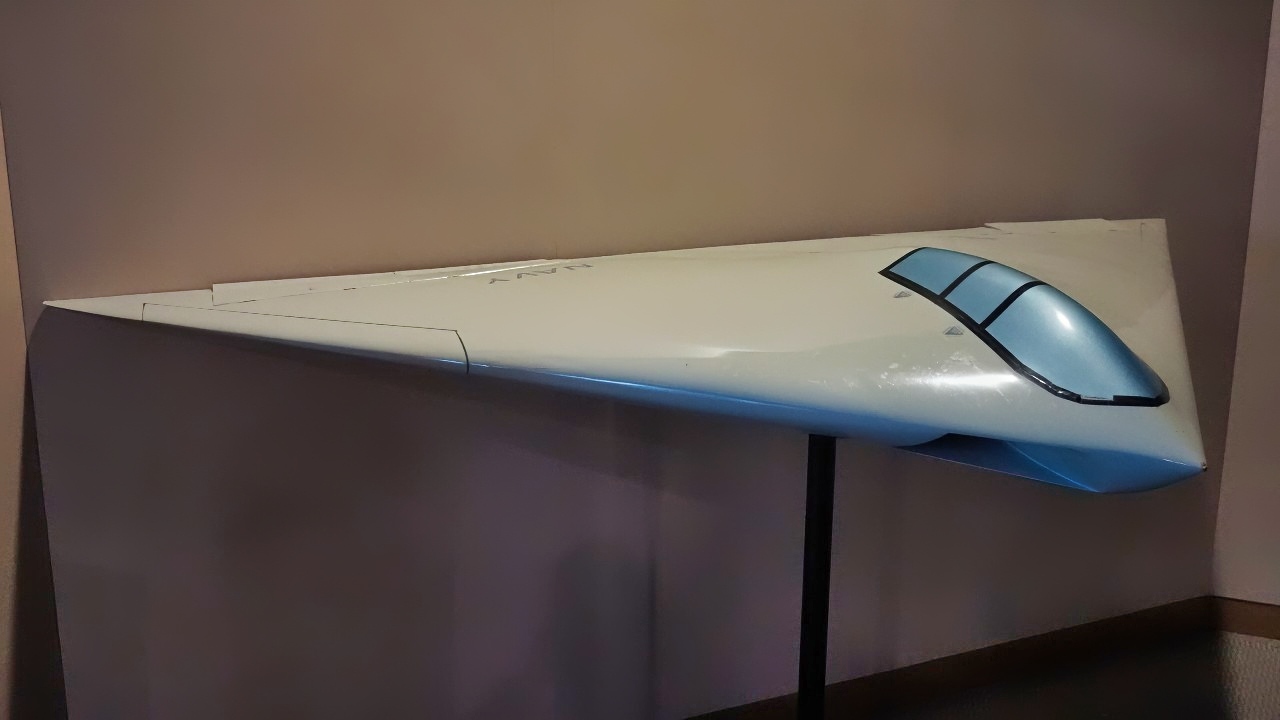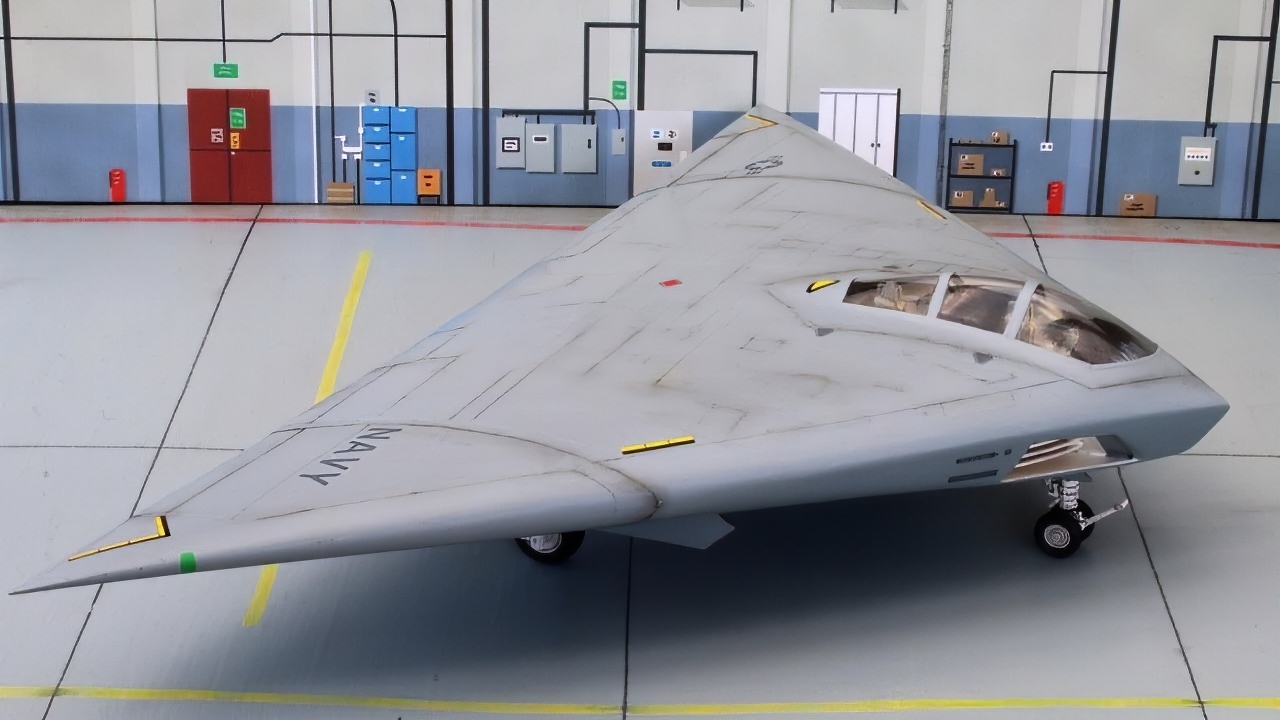Key Points and Summary – The A-12 Avenger II was a radical, carrier-based stealth bomber designed in the 1980s to replace the A-6 Intruder.
-Nicknamed the “Flying Dorito” for its unconventional tailless, triangular shape, the program aimed to create an aircraft that could evade advanced Soviet defenses.
-However, the project was a complete fiasco, plagued by massive weight issues, unforeseen technical challenges, and costs that spiraled out of control.
-Canceled in 1991, it became the largest contract termination in Pentagon history and served as a cautionary tale for future defense acquisition.
Meet the A-12 Avenger II Bomber
The McDonnell Douglas A-12 Avenger II was an ambitious and controversial project that aimed to develop a carrier-based stealth bomber for the United States Navy, replacing the older legacy models. The design of the A-12 was highly experimental and extremely unconventional, featuring a tailless flying wing layout that was unlike anything the Navy had ever flown before. Despite the aircraft’s promising potential, the project was cancelled due to multiple delays and cost overruns.
The Navy Needs a New Bomber
Research and development on the A-12 began in the 1980s, when the U.S. Navy began to consider options for replacing the A-6 Intruder.
The A-6 had served reliably since the Vietnam War, offering long-range, all-weather strike capabilities from aircraft carriers.
However, by the 1980s, it was becoming increasingly outdated in the face of rapidly advancing Soviet air defenses and the emergence of stealth technology.

Up Close B-2A Spirit Bomber at the U.S. Air Force Museum in Dayton, Ohio. Image Credit: Harry J. Kazianis/National Security Journal.
The Navy needed a new aircraft that could penetrate heavily defended airspace, deliver precision-guided munitions, and operate from the deck of an aircraft carrier.
This need gave rise to the Advanced Tactical Aircraft (ATA) program, which sought to develop a next-generation attack aircraft incorporating stealth technology.
The program was part of a larger comprehensive effort in U.S. military aviation toward low-observable platforms, following the success of the Air Force’s F-117 Nighthawk. In 1988, the Navy awarded the ATA contract to a team led by McDonnell Douglas and General Dynamics.

F-117 Stealth Fighter Static Display. Image Credit: National Security Journal.
The aircraft they proposed was designated the A-12 Avenger II, a name that paid homage to the World War II-era Grumman TBF Avenger torpedo bomber.
The Avenger II’s Unusual Design
The A-12’s design was striking and unconventional. It featured a tailless, flying wing configuration with a triangular, Dorito-like shape.
This design was chosen to minimize the aircraft’s radar cross-section and enhance its stealth capabilities. The airframe was to be constructed using advanced composite materials and radar-absorbent coatings.
The aircraft would house its weapons internally to maintain a low radar profile, and it was designed to carry a variety of precision-guided munitions, including laser-guided bombs and air-to-surface missiles.
One of the most challenging aspects of the A-12’s design was its requirement to operate from aircraft carriers. This meant the aircraft had to be rugged enough to withstand catapult launches and arrested landings and compact enough to fit on crowded carrier decks.
The A-12 was to be a two-seat aircraft, with a pilot and a weapons systems officer, and it would be equipped with state-of-the-art avionics, including terrain-following radar and electronic warfare systems. Its projected combat radius exceeded 900 nautical miles, significantly greater than that of the A-6, giving it the ability to strike deep into enemy territory without refueling.
Rough Skies for the A-12
Despite its futuristic design and promising capabilities, the A-12 program quickly ran into serious trouble. One of the most persistent problems was weight. The aircraft was significantly heavier than originally projected, due in part to the complexity of integrating stealth features with carrier-based requirements.
This weight issue threatened the aircraft’s ability to meet performance goals and operate safely from carriers. Additionally, the use of advanced materials and manufacturing techniques introduced unforeseen technical challenges and delays.
As the program progressed, costs began to spiral out of control. The original development cost estimate of around $4.8 billion ballooned to over $5 billion by the early 1990s, with projections suggesting the total cost could exceed $11 billion.
The per-unit cost of the aircraft was estimated to be over $165 million, making it one of the most expensive tactical aircraft ever proposed. Compounding these issues was the fact that the A-12 was a classified, or “black,” program. This secrecy limited oversight and made it difficult for Congress and the Department of Defense to assess the program’s progress and viability.
In 4 Words: The Navy Cancelled It
By the end of 1990, the A-12 program was in crisis. Technical problems remained unresolved, costs continued to rise, and the aircraft was nowhere near ready for production.
On January 7, 1991, Secretary of Defense Dick Cheney decided to cancel the program, citing cost overruns, schedule delays, and performance uncertainties. It was the largest contract termination for default in the Pentagon’s history.
The cancellation of the A-12 triggered a lengthy legal battle between the U.S. government and the contractors, McDonnell Douglas and General Dynamics.

A-12 Avenger II Model. Image Credit: Creative Commons.
The government sought to recover $1.35 billion in payments, arguing that the contractors had failed to meet their obligations. The contractors countered that the government had changed requirements and was unable to provide adequate support. The legal dispute dragged on for more than two decades and was not fully resolved until 2014, when a federal court ruled in favor of the contractors.
The A-12 fiasco caused some to reconsider defense acquisition policies of the time. Its failure highlighted the dangers of overpromising on unproven technology, underestimating complexity, and proceeding without adequate testing and validation.
In the aftermath of the A-12’s cancellation, the Department of Defense implemented more rigorous oversight and milestone-based development processes to prevent similar failures in the future.
About the Author:
Isaac Seitz, a Defense Columnist, graduated from Patrick Henry College’s Strategic Intelligence and National Security program. He has also studied Russian at Middlebury Language Schools and has worked as an intelligence Analyst in the private sector.
The Best Tanks on Earth
AbramsX: The Tank the US Army Wants











Thomas A Mills
July 24, 2025 at 6:05 pm
Northrop Grumman lost the ATA contract because of politics. NG was producing the B-2. MD/GD were given the project without a clue. If NG had been chosen the Navy would be flying their baby B-2(A-13) Avenger II under the Grumman stable.
TruthB Told
July 26, 2025 at 1:15 pm
Wrong company. If it was Boeing, then it would have been approved. Boeing pays a bigger kickback 😎